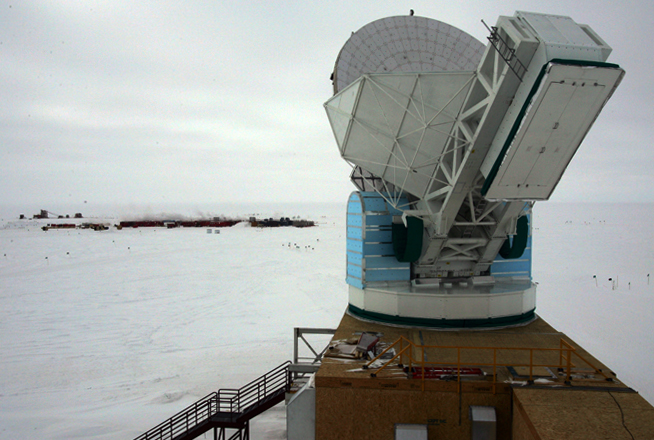|
Growing upNew station to serve the ever-expanding science needs of a variety of research projectsPosted January 17, 2008
More Information Over the many years it took to build the new South Pole Station and all of its ancillary facilities – with plumbers, electricians, carpenters and steelworkers far outnumbering the researchers – the running joke has been that science is supporting construction. No more. The station, an engineering wonder, now supports a wide variety of science disciplines and projects, some even more expensive to build than the 65,000-square-foot building itself. “All of the science projects that we’ve [supported] over the last 50 years have grown up,” said Vladimir Papitashvili, the National Science Foundation (NSF) South Pole science representative and program officer for aeronomy and astrophysics at the NSF’s Office of Polar Programs. “There’s more demand at South Pole, and more disciplines are coming.” Indeed, there seems to be no end to the list of science -isms and disciplines represented at the South Pole today, from geomagnetism to cosmology and climatology to seismic studies. “There’s no better place in the world to do science,” asserted Susan Solomon, the renowned atmospheric chemist with the National Oceanic and Atmospheric Administration whose work 20 years ago in the Antarctic determined the cause of ozone depletion. Her findings formed the basis of the U.N. Montreal Protocol, an international agreement to protect the ozone layer by regulating damaging chemicals. She served as a member of the blue-ribbon panel whose report prompted the building of the South Pole Station, and she attended the Jan. 12 official dedication. Two of the U.S. Antarctic Program’s biggest projects are currently under way at the Pole. The newly constructed South Pole Telescope will search out galaxy clusters via variations in the cosmic microwave background, which may eventually lead to a better understanding of dark energy. The IceCube Neutrino Telescope is spending about $270 million to learn more about high-energy neutrinos, which may help unravel a host of astrophysical mysteries. Albrecht Karle, an associate professor of physics at the University of Wisconsin-Madison, is a collaborator on IceCube and helping oversee the project this season on the Ice. He hinted that the elevated station symbolizes more than just a new era for research at the South Pole. “This new station, more so than before, is a showcase for international science,” he said. “I think it’s great that we made this transformation from when early on maybe [being at the South Pole] was more of geopolitical component. Now it is a place where science can be advanced.” For Steve Meyer, co-principal investigator on the South Pole Telescope, which stands higher than the elevated station, the events of Jan. 12 serve as a way to make his team’s work visible outside of a small community of researchers. “One of the problems with this place, is we do all of our work … and we get good science out of it, but how does that [message] ever make it to the politicians? How does it make it to the public?” he asked. “You can’t run science from an ivory tower anymore. This stuff just costs too much.” The early stations from the 1950s and 1970s had limited capacity for conducting science, with most of the work focused on geomagnetism, atmospheric science and seismology, according to Papitashvili. In the last 20 years, he said, the South Pole has become the premiere location to conduct astrophysics, thanks in large part to its six-month-long winter night. “Many projects here use Antarctica as a platform to study near-Earth space, sun and even beyond the sun, the universe,” he explained. “My program deals with the ozone hole to the beginning of the universe.” For Papitashvili, whose department accounts for about 80 percent of the science at the Pole, the opportunity to work at 90 degrees south fulfills a lifelong dream. “And now I’m here as the NSF science rep. It’s amazing. I cannot believe sometimes that I’m doing this – coordinating science at South Pole. It’s something I would never have dreamed of 20 years ago.” And who would have dreamed of seven-story-high telescopes and observatories buried deep in the ice over a cubic kilometer? Of course, polar researchers can always dream bigger. “I assure you scientists already have their minds set on bigger expansions,” Papitashvili said. Return to main story: A New Era |



For USAP Participants |
For The Public |
For Researchers and EducatorsContact UsNational Science FoundationOffice of Polar Programs Geosciences Directorate 2415 Eisenhower Avenue, Suite W7100 Alexandria, VA 22314 Sign up for the NSF Office of Polar Programs newsletter and events. Feedback Form |


